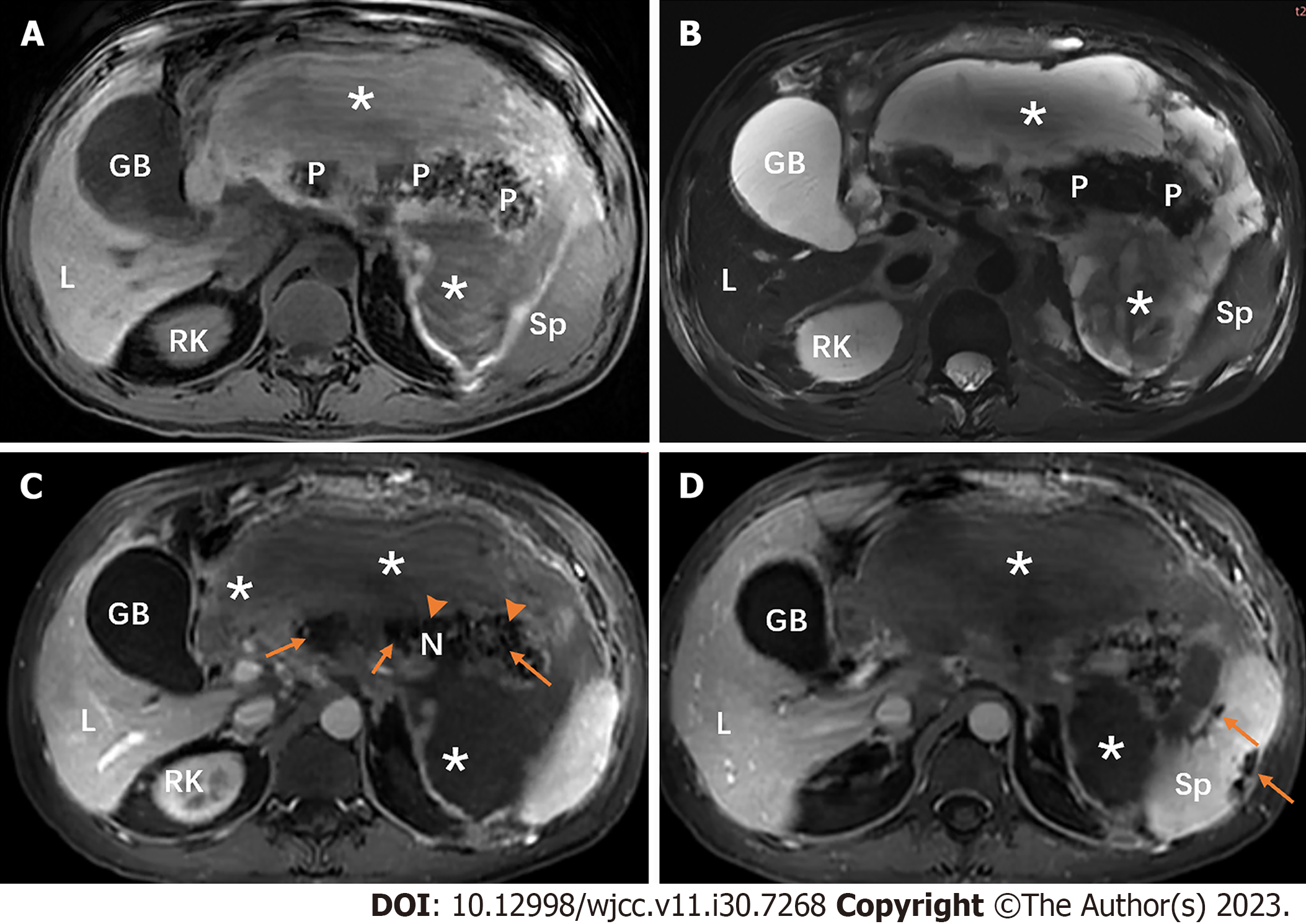Copyright
©The Author(s) 2023.
World J Clin Cases. Oct 26, 2023; 11(30): 7268-7276
Published online Oct 26, 2023. doi: 10.12998/wjcc.v11.i30.7268
Published online Oct 26, 2023. doi: 10.12998/wjcc.v11.i30.7268
Figure 4 A 42-year-old man diagnosed with diabetes for 1 year with severe acute pancreatitis whose random blood glucose level was 19.
19 mmol/L. A and B: The pancreas is poorly defined, and it shows heterogeneous hypointensity on each sequences. Peripancreatic walled-off necrosis lesions (asterisks) are both hypointensity and hyperintensity, indicating the presence of peripancreatic fat necrosis and hemorrhage; C: Postcontrast venous phase axial magnetic resonance (MR) image shows nonenhanced areas (arrows) compatible with parenchyma necrosis (> 50% parenchyma involvement) in the head, body and tail of the pancreas (MR severity index score of 10 points); D: Postcontrast venous phase axial MR image shows nonenhanced areas (arrows) of spleen (splenic infarction), which indicates splenic artery invasion. GB: Gall bladder; L: Liver; N: Necrotic areas; P: Pancreas; RK: Right kidney; Sp: Spleen.
- Citation: Ni YH, Song LJ, Xiao B. Magnetic resonance imaging for acute pancreatitis in type 2 diabetes patients. World J Clin Cases 2023; 11(30): 7268-7276
- URL: https://www.wjgnet.com/2307-8960/full/v11/i30/7268.htm
- DOI: https://dx.doi.org/10.12998/wjcc.v11.i30.7268









